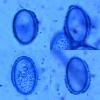
29-06-2022 10:29
ruiz JoseHola a todos,recientemente he mandado a analizar e

27-06-2022 15:49
 Andgelo Mombert
Andgelo Mombert
Bonjour, Sur branche morte attenante d'Ulmus mino

28-06-2022 21:27
 Hardware Tony
Hardware Tony
Hopefully there aren't too many 6-spored sps. to s

27-06-2022 11:46
 Bernard Declercq
Bernard Declercq
Dear all,I am looking for a pdf of following paper

27-06-2022 11:14
 Laurent Bonneau
Laurent Bonneau
bonjour, sur branchette de feuillu au bord d'un

25-06-2022 21:26
 Zuzana Sochorová (Egertová)
Zuzana Sochorová (Egertová)
Hi forum,are there any doubts this is Orbilia auri

27-06-2022 03:35
Stefan JakobssonIn a moisture chamber with dung of Nyctereutes pro

25-06-2022 07:08
Zuidland PeterHello all,I view of possible confusion by poor ima

25-06-2022 22:39
Georges GreiffHi all, Since I do not have Velenovsky (1934), I
Scutellinia patagonica
ruiz Jose,
29-06-2022 10:29
Adjunto fotos de esporas, la 3 es en lactofenol caliente..
adjunto archivo ab1 con los datos adn.
Que opinais??
Saludos y gracias por anticipado
Raúl Tena Lahoz,
29-06-2022 17:07

Re : Scutellinia patagonica
Hola José Antonio
En realidad, en mi opinión, lo que parece perisporio es el contenido interno de las esporas... Están reventadas y el contenido oleico ha salido al exterior quedándose pululando alrededor de la espora... Si fuese el perisporio no se apreciaría la ornamentación tan bien como se ve... Si te fijas, en el contorno esporal se aprecian los puntos de roturas o irregularidades y es ahí donde aparece el contenido interno teñido... Te recomiendo utilizar un medio menos agresivo, tal vez el mismo azul pero sin lactofenol, o prueba a no calentar... Cuando hay diferencias de presión muy grandes, la pared tiende a colapsar o reventar...
Un saludo,
Raúl
Edito: el azul de lactofenol calentado está bien utilizado en este caso para comprobar que la pared esporal se despega o no... Claro, al ser tan agresivo para la espora, ocurre a veces lo que te ha pasado... En la foto de Malcolm se observa muy bien que se ha soltado el perisporio... Si sólo quieres teñir la pared, con un azul menos agresivo suele ser suficiente... Aunque puede que no sea suficiente para descartar las especies que pierden el perisporio...
Un saludo,
Raúl
Edito: el azul de lactofenol calentado está bien utilizado en este caso para comprobar que la pared esporal se despega o no... Claro, al ser tan agresivo para la espora, ocurre a veces lo que te ha pasado... En la foto de Malcolm se observa muy bien que se ha soltado el perisporio... Si sólo quieres teñir la pared, con un azul menos agresivo suele ser suficiente... Aunque puede que no sea suficiente para descartar las especies que pierden el perisporio...
Malcolm Greaves,
29-06-2022 18:30
ruiz Jose,
29-06-2022 19:37
Re : Scutellinia patagonica
Muchas gracias Raúl por la explicación me queda claro,y tiene todo el sentido,una mala interpretación por mi parte,,no llevo haciendo mucho tiempo esta prueba de calentar el lactocenol ,el compañero Malcolm me suele aconsejar bien,ya veo la gran diferencia que hay de unas a otras.
En otras especies lo había hecho,y nunca con este resultado,reventadas casi siempre.
Saludos y gracias de nuevo.
En otras especies lo había hecho,y nunca con este resultado,reventadas casi siempre.
Saludos y gracias de nuevo.
ruiz Jose,
29-06-2022 19:38
Re : Scutellinia patagonica
Gracias Malcolm,,si que se ve diferente.saludos
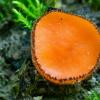
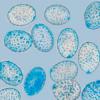
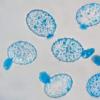
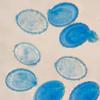
 F1-35241-1F-ITS4-0001.ab1
F1-35241-1F-ITS4-0001.ab1